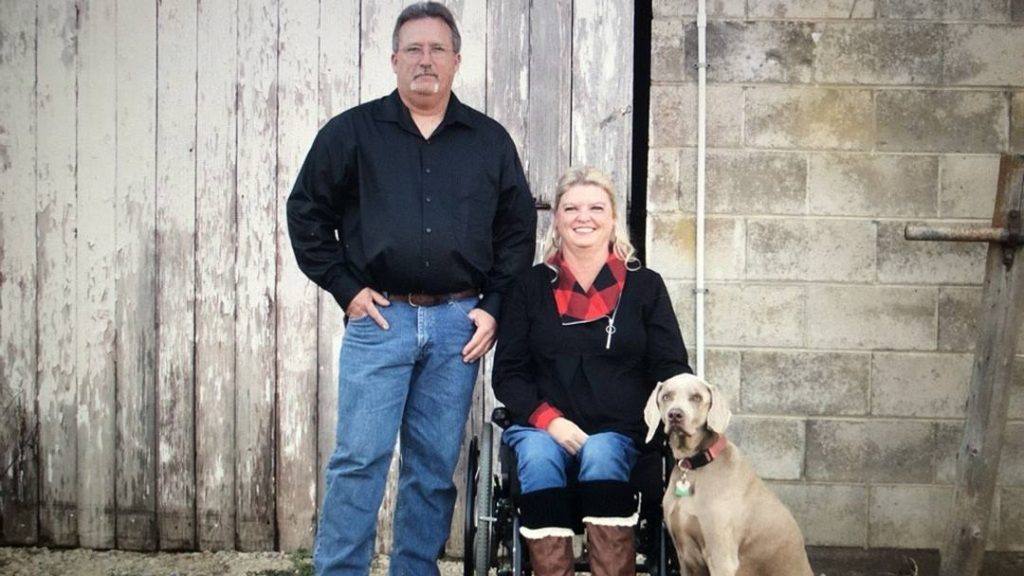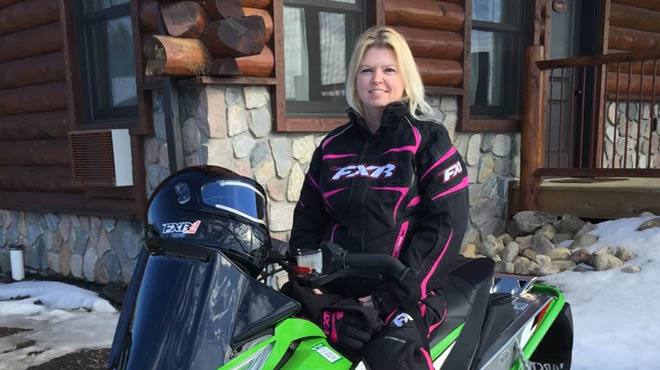-
Featured News
Adapting to life after spinal cord injury with rehab and determination

What began as a creative backyard project changed Laurie Reese's life forever.
An avid gardener, Laurie envisioned turning an unused outhouse on their property into an ideal garden shed. So on a November day in 2007, Laurie's husband, Pete, used their skid loader to move the structure. While Laurie was guiding Pete, she noticed the outhouse was wobbling, so she put her hands out to steady it. That’s when the structure fell over, trapping Laurie beneath it.
Pete was able to lift the outhouse just enough so that Laurie could pull herself most of the way out from under it, and Pete pulled her the rest of the way to safety. Paramedics took Laurie from her home in Oronoco, Minnesota, to Mayo Clinic Hospital, Saint Marys Campus in Rochester, Minnesota.
A sobering prognosis
Laurie and Pete learned that two vertebrae in her thoracic (middle) spine were damaged. She had a fracture of the T12 vertebrae and a fracture dislocation of the T11 and T12 vertebrae.
The next day, she underwent nearly six hours of surgery. Her prognosis following the operation was dire: Laurie would have a 0-3% chance of walking again.
"I was in shock and not really thinking clearly. So many things were running through my head," Laurie says. "I was just 39 and wondered if this injury would shorten my life. Our daughter was pregnant with our first grandchild, and I thought, 'Well, I've still got use of my arms, so at least I can hold the baby.'"
Thoughts of her future grandchild spurred her to work especially hard in therapy to gain as much strength, movement and ability to do everyday tasks as possible. Laurie also knew two people who had quadriplegia, so she understood the reality of her situation.
Preparing for her new life

Laurie began rehabilitation while still in the hospital, then transferred to the Mary Brigh Building on the Saint Marys Campus for intensive, inpatient rehabilitation to adapt to her new life.
In rehab, Laurie worked with physical and occupational therapists to practice and learn a wide range of skills and activities, including:
- Stretching her legs.
- Rolling over and sitting up.
- Inserting a catheter.
- Using a wheelchair.
- Transferring in and out of vehicles.
- Showering and dressing.
- Using a machine that supported her, braced her legs and simulated walking.
- Performing daily chores like cooking, doing the dishes and opening cupboards.
"Before they let you leave rehabilitation, you go home for a day," Laurie says. "That's when the reality hits you that this is your life going forward."
Adapting, learning and doing what she wants
By December 20, Laurie was ready to return home. Once home, outpatient therapy and occupational therapists make suggestions for adapting the house to meet her needs. To accommodate her wheelchair, the Reeses added a ramp to the house and eventually remodeled the kitchen.
Once the basics were manageable, Laurie focused on resuming the things she loved to do, such as gardening, horseback riding and snowmobiling.
Pete made modifications so she could indulge in her love of flowers. He revamped the garden beds to make them smaller and more manageable, built raised beds that Laurie could reach and added a fountain.
Another goal of Laurie's was to try horseback riding again. She was able to sit on her horse a couple of times but realized it wasn't feasible to safely ride.

Snowmobiling was a different story. After testing her comfort and ability on an older machine, she opted to get a new one with upgrades like an electric start, reverse gear, heated hand warmers and more. With a strap anchoring her legs, she's taken several trips — and even some spills — and continues to tinker with the design of her seat.
Since the accident, Laurie has been determined to live life on her own terms. With help from her therapists and plenty of practice, she stood for pictures at a daughter's wedding.
She holds, cares for and plays with her eight grandchildren. When she wants to see them, she loads her wheelchair onto the lift bed, gets into her pickup and drives to their homes.
Laurie also returned to work in cardiovascular education for Mayo Clinic in Rochester, a position she's held for 19 years. She provides digital education for medical staff needing board certification or recertification.
Nearly 20 years of success
Although it's been 17 years since her accident, Laurie still battles issues like pressure sores that landed her in the hospital for three months this year. That hospitalization set her back, and she spent nearly three months in rehabilitation at Mayo Clinic Health System in Cannon Falls, Minnesota.
"It still can be rough. Some days are better than others, and I get jealous of those who can easily do something like picking up a baby," she says. "And nothing is as easy as you think it will be, but you make it work. You have to have the mindset and the drive to constantly adapt."
What helped Laurie develop that mindset and drive was a journal her rehab team encouraged her to write in the hospital after her initial injury. The journal evolved into a book, "My Life Beyond the Outhouse: The First Two Years." Laurie focused on the first two years because she was most likely to regain any mobility during that time.
"Publishing the book helped me talk about my injury, and my family and friends got a better understanding of what I was going through," Laurie says. "People who read it say they had no idea how much of your life is affected by being paralyzed."
While her life changed on that November day, it didn't end. Laurie attributes her success to her rehabilitation team and their ongoing care.
"I couldn't have asked for better people on my side. When I cried, they gave me a shoulder to cry on," she says. "I can't imagine not having the training they gave me. Because of them, I was able to start out in a new capacity, and today, I'm able to do almost whatever I want."
"Even now, when I go in for appointments, they remember me and know my story. It's so neat that out of the thousands of patients they've seen, we still have that connection."
This article first published on the Mayo Clinic Health System blog.







